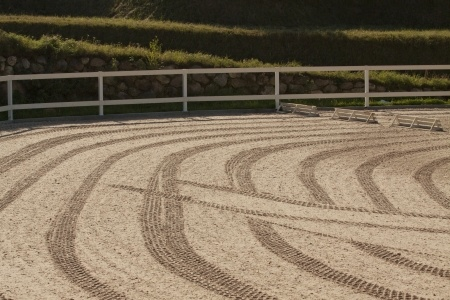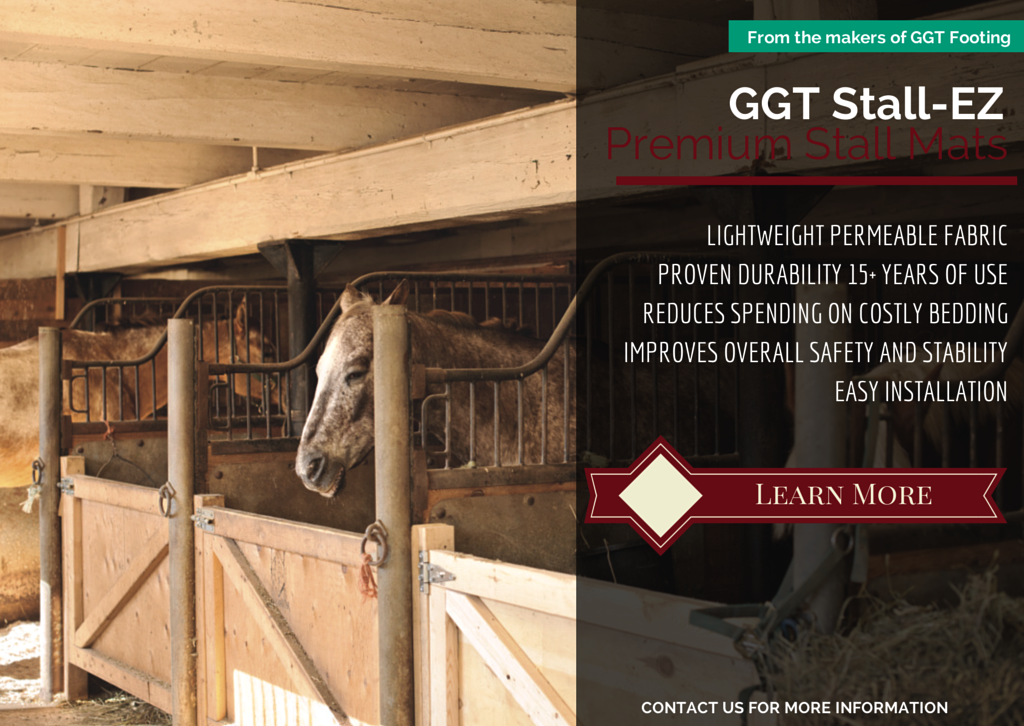Despite its name, the influence of the footing laid down in horse arenas doesn't stop at the hooves. Interactions between the horse's hooves and the footing below can have an all-over effect on the horse's body. Many amateur competition steeds and pleasure riding horses end up retiring early due to complications such as navicular disease. Additionally, race horses may sustain leg and joint injuries while still in their prime, causing them to withdraw from major competition. This led many to wonder; is it the ground they're trotting on?
When faced with these questions, researchers turned their questions to the ground the horses were treading on. However, studying footing with absolute accuracy is no easy task, which likely contributes to the fact that there isn't a lot of research done on the subject. Controlling variables such as hereditary predisposition to have certain ailments, age, build, and quality of general hoof maintenance all play a part in skewing the accuracy of the data.
Elin Hernlund, DVM, conducted a footing study on elite-level jumping horses. She used ultra high-speed cameras to capture and measure landing speed, angles, and directions in addition to direction and breaking speeds of each hoof as it struck, moved on, and then left the ground. The research revealed that landing and breaking speed after a jump varied widely from one hoof to the other. However, this study was limited in that there was no possible way to measure the force each leg was applying to the ground before and after a jump.
It wasn't until 2006 that Crevier-Denoix and her colleague Henry Chateau, DVM, PhD, began working on a 3D horseshoe which could be nailed to the hoof in traditional fashion, but could accurately measure the force applied to the ground in three spatial directions and the trajectory of the center of pressure. These studies were focused on 'synthetic' footing materials. They uncovered that 'all-weather wax tracks' have a 'dampening effect,' in that they absorb a good amount of contact shock between the hoof and the ground. This benefit is somewhat counter-balanced by a longer 'stance phase' observed during the first part of the step. This can make the footing feel somewhat 'slower.'

Additionally, side effects may be present after long exposure such as lingering tendon tension brought on by over exertion of the hind legs. Though these results are interesting, researchers are still a ways off from having an 'end-all' answer to the footing question. Paul McClellan, DVM, owner of the San Dieguito EquineGroup Inc. stated;
“There is certainly footing out there that is kinder to horses’ legs, but I believe that there is no one footing that is good for all horses.”
Until more research is done, it is up to you to decide what kind of footing your horse is exposed to the most. If you would like to read more about arena horse footing or other articles related to equestrian stabling and keeping, feel free to visit our website. If you would like to message us directly about the variants of premium footings we offer, we welcome you to contact us.


